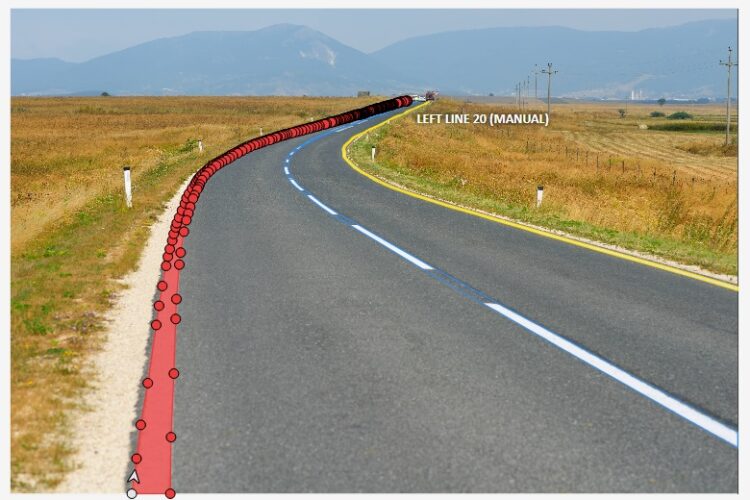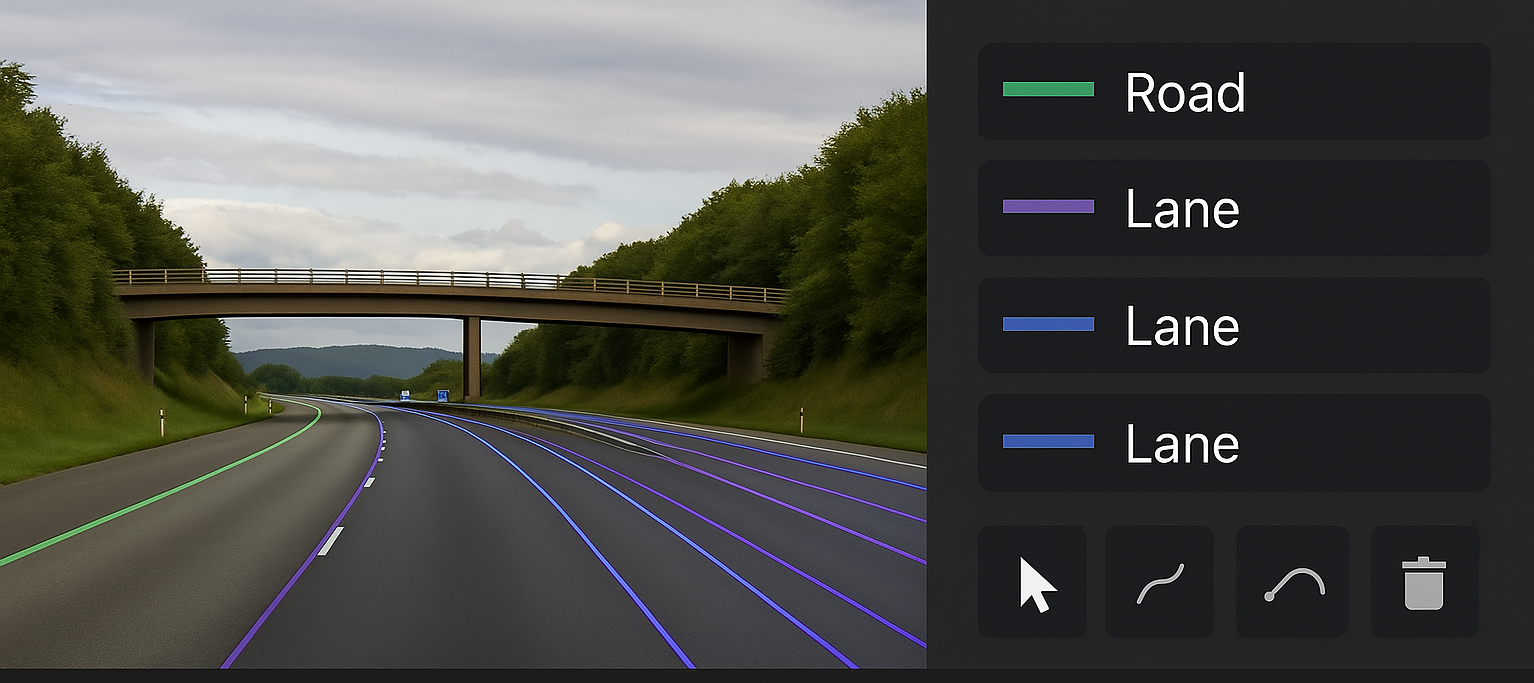Polyline Annotation: Training AI for Road and Lane Detection
Polyline Annotation: Training AI for Road and Lane Detection
As autonomous vehicles and advanced driver-assistance systems (ADAS) continue to evolve, accurate lane and road detection is critical for their success. One of the essential techniques used in training AI models for these applications is polyline annotation. This method involves precisely marking lanes, road edges, and pathways to enable AI-powered systems to navigate safely and efficiently.
AI-powered navigation relies heavily on well-annotated datasets to interpret road environments. Polyline annotation plays a key role in ensuring self-driving cars and ADAS-equipped vehicles can recognize lane structures and make safe driving decisions in various conditions. The accuracy of these annotations directly impacts the reliability of AI models in real-world scenarios.

What is Polyline Annotation?
Polyline annotation is a data labeling technique where annotators draw lines along specific paths, such as road boundaries, lane markings, and sidewalks. Unlike bounding boxes or polygons, polylines are particularly useful for detecting and following road trajectories.
By using polyline annotation, AI models learn to interpret road layouts, recognize lane changes, and distinguish between different driving lanes, ultimately improving their decision-making abilities. This technique also supports lane-keeping assistance, path planning, and autonomous navigation by providing structured data on road networks.
Importance of Polyline Annotation in Road and Lane Detection
- Enhancing Autonomous Navigation
- Self-driving vehicles rely on precise lane and road information to make real-time navigation decisions.
- Polyline annotation helps AI differentiate between solid and dashed lane markings, pedestrian crossings, and bike lanes.
- Autonomous vehicles use this data to predict lane curves, avoid lane departure, and execute smooth lane changes.
- Improving ADAS Systems
- Advanced driver-assistance systems, such as lane departure warnings and adaptive cruise control, require highly accurate road mapping.
- Polyline annotations enable these systems to detect lane boundaries and warn drivers of potential risks.
- Properly labeled road data ensures smoother interactions between human drivers and semi-autonomous vehicle functions.
- Facilitating HD Mapping for Smart Cities
- Smart transportation systems use high-definition (HD) maps annotated with polylines for traffic management and urban planning.
- These maps help optimize traffic flow and enhance road safety.
- HD maps enable AI-driven infrastructure improvements, such as automated traffic signal control and predictive traffic monitoring.
Challenges in Polyline Annotation
Despite its advantages, polyline annotation comes with challenges:
- Complex Road Structures: Roads with multiple lanes, intersections, or curves require meticulous annotation. Ensuring accuracy in diverse driving environments is a major challenge.
- Weather and Lighting Conditions: AI must be trained to recognize road markings under varying conditions, such as fog, rain, or nighttime lighting. Low visibility can make annotations difficult.
- Consistency and Accuracy: Human annotators must maintain high precision to avoid misinterpretation by AI models. A small error in annotation can lead to inaccurate AI predictions, affecting road safety.
- Scalability Issues: As the need for autonomous driving data grows, scaling polyline annotation efforts while maintaining quality is a continuous challenge for AI developers.
Best Practices for Effective Polyline Annotation
To maximize the effectiveness of polyline annotation for road and lane detection, consider the following best practices:
- Use High-Resolution Imagery: High-quality satellite or camera-captured images improve annotation accuracy.
- Leverage AI-Assisted Annotation Tools: Combining manual and AI-driven annotation speeds up the process while maintaining precision.
- Ensure Multi-Layered Verification: Cross-check annotations through multiple annotators to reduce human errors.
- Adapt Annotations for Different Road Types: Urban, rural, and highway roads require different annotation approaches to capture variations in lane structures.
How Outline Media Solutions Can Help
At Outline Media Solutions, we provide high-quality polyline annotation services to support AI model training for road and lane detection. Our expert annotators ensure precision, consistency, and scalability, helping businesses develop robust autonomous driving and ADAS applications.
With years of experience in data annotation, we offer:
- Accurate polyline annotations to improve AI model performance
- Customizable annotation solutions for different types of autonomous driving datasets
- Quality control measures to ensure error-free annotations
Partner with us to accelerate your AI model’s accuracy and performance. Contact us today to learn more about our annotation services!
Conclusion
Polyline annotation is an essential tool in training AI for road and lane detection, playing a crucial role in autonomous vehicles, ADAS, and smart city applications. As the demand for precise AI-driven navigation grows, high-quality data annotation becomes more critical than ever. By leveraging expert annotation services, businesses can ensure their AI models achieve high accuracy and reliability in real-world driving conditions.
Investing in professional polyline annotation services can be the key to developing safe, efficient, and intelligent transportation systems. Whether for autonomous driving, smart city planning, or ADAS enhancement, quality annotations pave the way for a future of AI-powered mobility.


